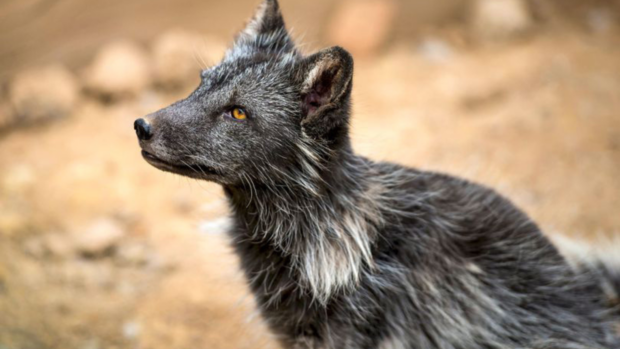In 2021, an extraordinary incident occurred in Brazil’s Cerrado region when a car ran over an animal resembling a dog. The injured creature was promptly rescued and brought to veterinarians who were taken aback by its peculiar characteristics. Although it had the appearance and bark of a dog, it also possessed long, foxlike ears and exhibited climbing abilities. This led to further investigations, which astonishingly confirmed that this animal was the world’s first-ever dog-fox hybrid!
Naturally, this revelation raises many questions. Firstly, how did two completely different species manage to breed? Secondly, what circumstances enabled their encounter, and what potential implications does this bizarre hybridization hold? In this article, we will delve into these inquiries and shed light on the possible factors that contributed to the creation of this remarkable dog-fox hybrid. Additionally, we will explore the ultimate fate of this enigmatic creature.
To confirm the authenticity of the dog-fox hybrid, scientists conducted thorough examinations. According to National Geographic, the hybrid was given the name “Dogxim,” a combination of “dog” and “graxaim do campo” (the Portuguese name for Pampas fox). The initial verification involved counting the chromosomes of the animal, as having a unique count would establish its distinctiveness. Surprisingly, the dog-fox hybrid had a chromosome count of 76, which aligned with that of the maned wolf or Chrysocyon brachyurus. However, its characteristics disqualified it from being a possible parent of this hybrid, as domestic dogs have 78 chromosomes, while Pampas foxes have 74. This discovery led scientists to conclude that the 76 chromosomes of the dog-fox hybrid could be the first evidence of its hybridization.
Furthermore, geneticists examined the mitochondrial DNA of the hybrid, which exclusively originates from its mother. They determined that the mitochondrial DNA came from a Pampas fox. By analyzing the nuclear DNA, which contains genetic information from both parents, they discovered a combination of Pampas fox and dog DNA.
One might wonder how a hybrid between such distinct animals is possible. National Geographic explains that dogs and foxes belong to the same biological family, Canidae. However, dogs fall under the genus Canis, while foxes diverge into the Vulpes category. In the case of the dog-fox hybrid, the mother was a Pampas fox, belonging to the genus Lycalopex. Biologist Roland Kays emphasizes the rarity of such a crossbreeding event, stating that mammals generally reproduce within their own species. Although instances of breeding between different species can occur if they haven’t been separated for an extended evolutionary period. This phenomenon has occasionally been observed in coyotes and wolves, typically when one species is more abundant than the other in a particular region.
Speaking of the possible circumstances that led to the meeting and breeding of a dog and a Pampas fox, Rafael Kretschmer from the Universidade Federal de Pelotas suggests that the loss of natural habitat for Pampas foxes due to cattle ranches and human settlements may have pushed them into domestic dog territories. This overlapping of territories could have provided opportunities for mating between the two species. Additionally, Bruna Szynwelski, a co-author of the Dogxim study, speculates that abandoned dogs might have played a role in this hybridization. Sadly, the practice of abandoning dogs still occurs in Brazil, and these abandoned dogs often end up in natural areas, including protected regions, increasing the chances of encounters with native wildlife.
Loren Rieseberg, a geneticist at the University of British Columbia, points out that hybridization is more common during the evolution of plants and animals than previously believed, even between lineages that have diverged significantly. With the accelerated pace of climate change, species are adapting at a faster rate, making it increasingly challenging to predict the development of different species.
However, despite the novelty of the dog-fox hybrid, it is unlikely that we will witness more occurrences of this kind. The unique case of Dogxim remains a rare and exceptional phenomenon.
In conclusion, the discovery of a dog-fox hybrid in Brazil captured the attention of scientists worldwide due to the rarity of crossbreeding between distinct mammal species. Tragically, Dogxim met an untimely demise earlier this year under unknown circumstances. The Brazilian government is currently investigating the animal’s death. To learn more about this extraordinary hybrid, you can visit the website of the Multidisciplinary Digital Publishing Institute (MPDI). Stay updated on the latest digital trends and tips by visiting Inquirer Tech.
Your subscription could not be saved. Please try again. Your subscription has been successful.
You can read more about the dog-fox hybrid on the Multidisciplinary Digital Publishing Institute (MPDI) website.
Learn more about the latest digital tips and trends at Inquirer Tech.
(Note: HTML tags have been retained for formatting purposes.)
Denial of responsibility! Vigour Times is an automatic aggregator of Global media. In each content, the hyperlink to the primary source is specified. All trademarks belong to their rightful owners, and all materials to their authors. For any complaint, please reach us at – [email protected]. We will take necessary action within 24 hours.


